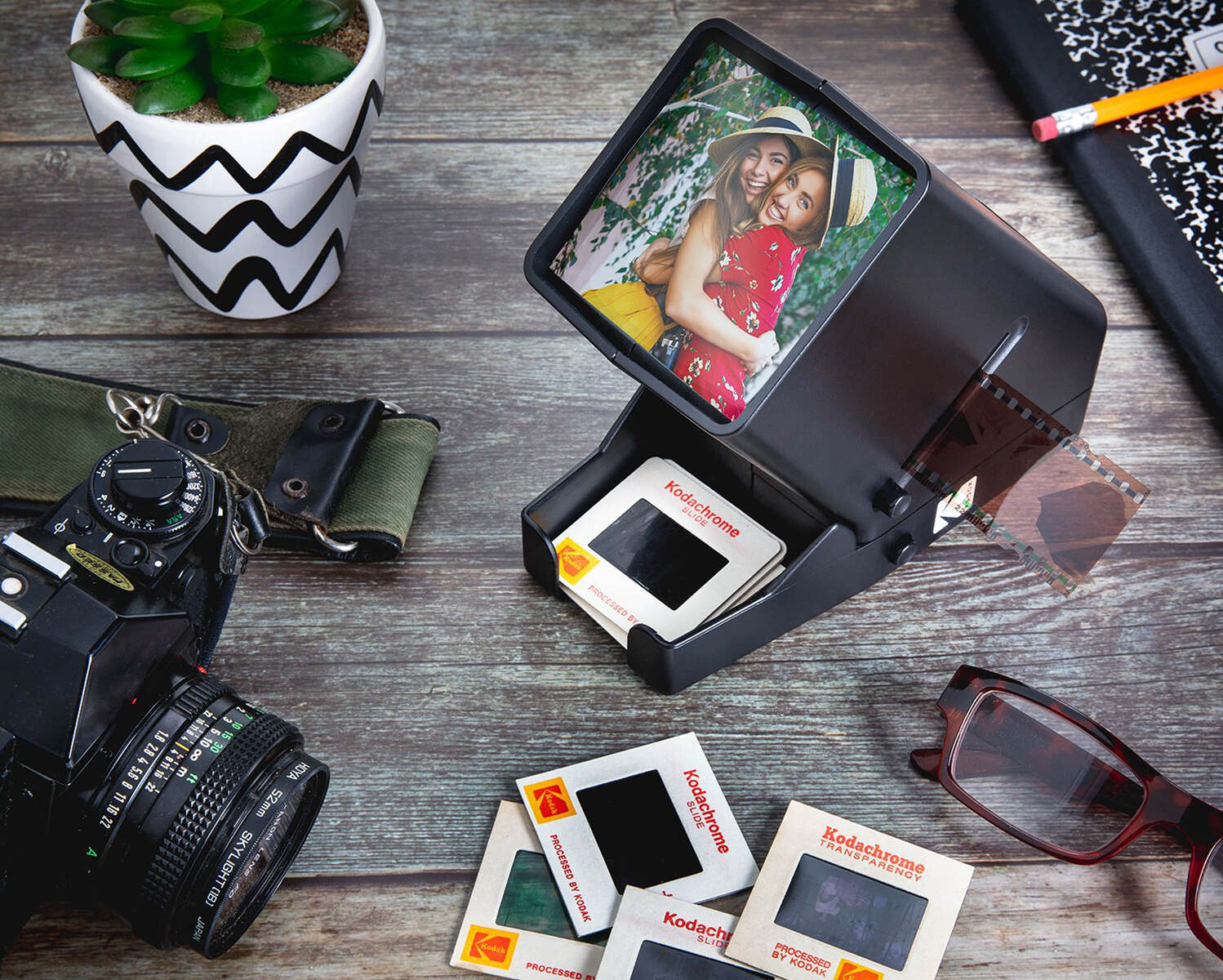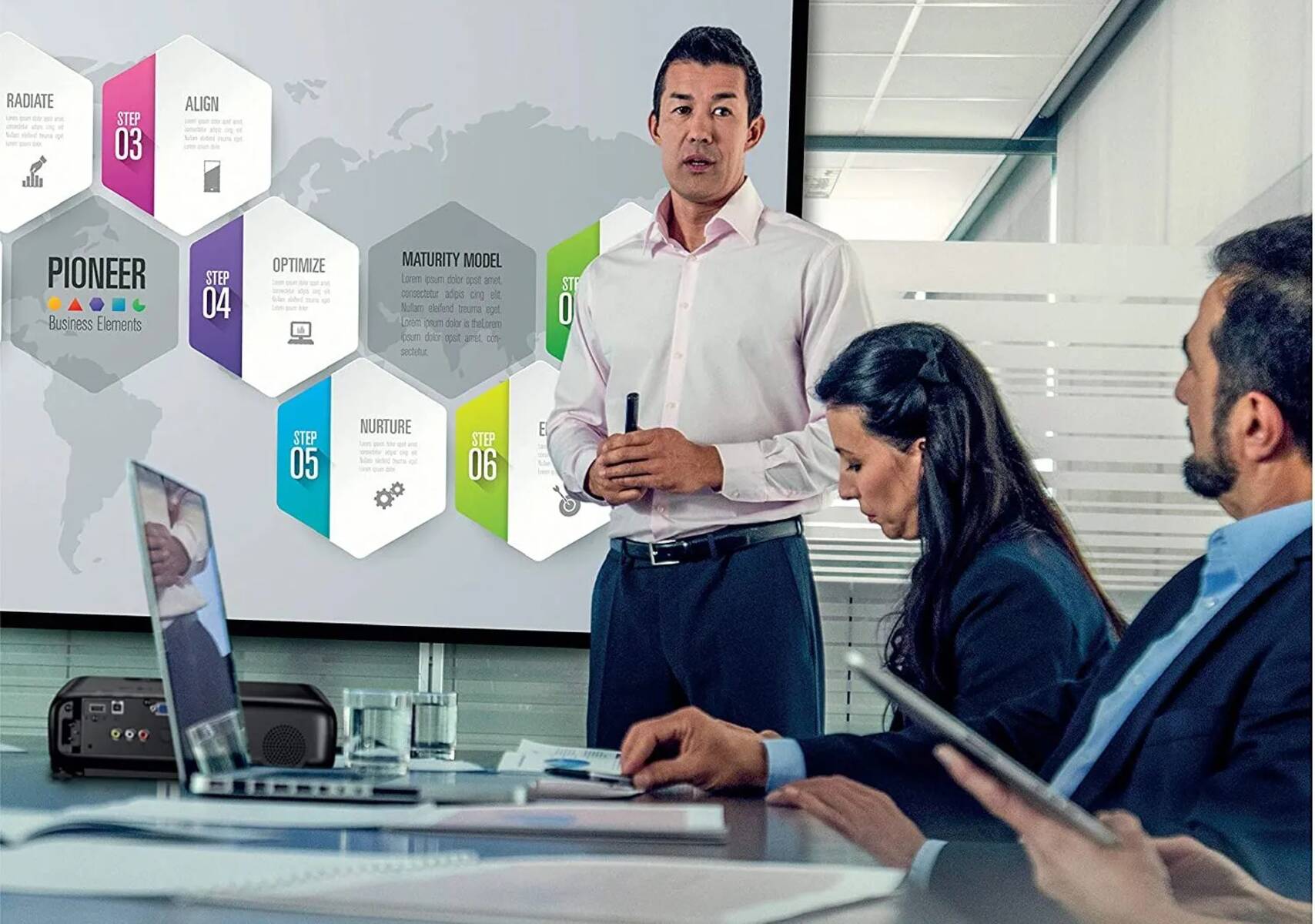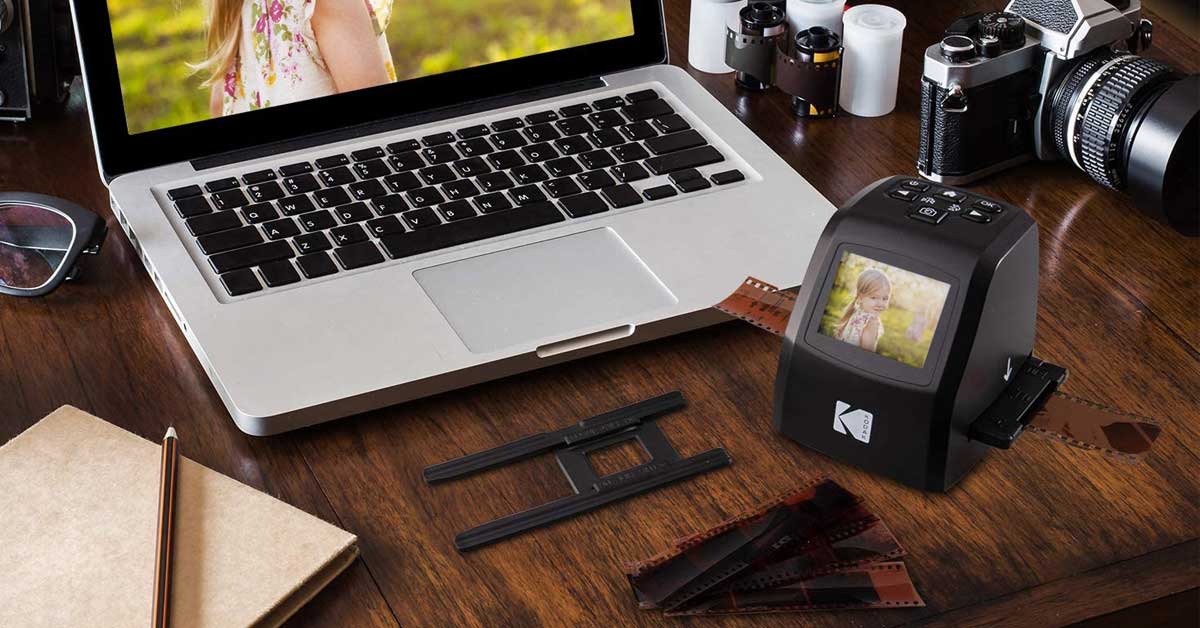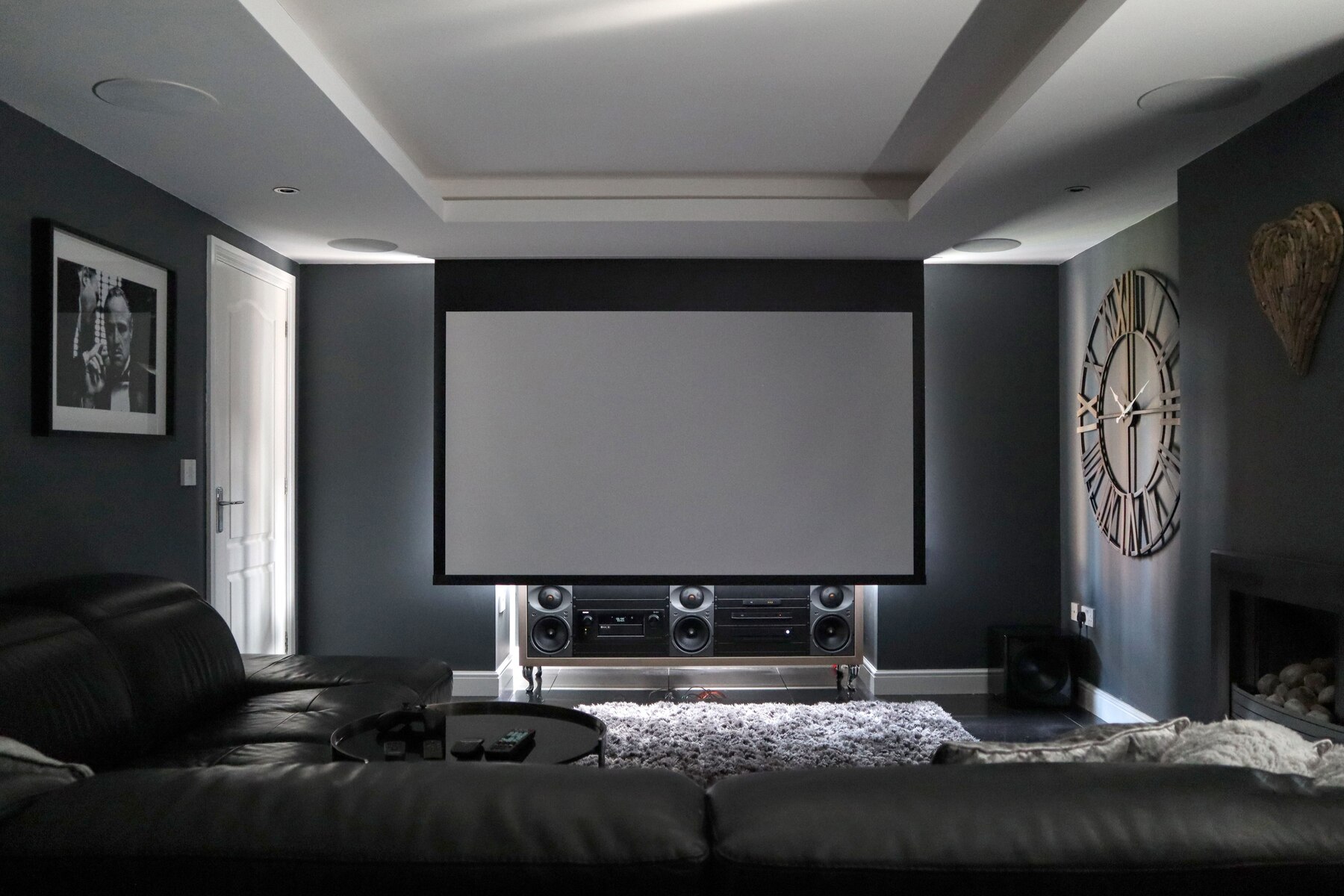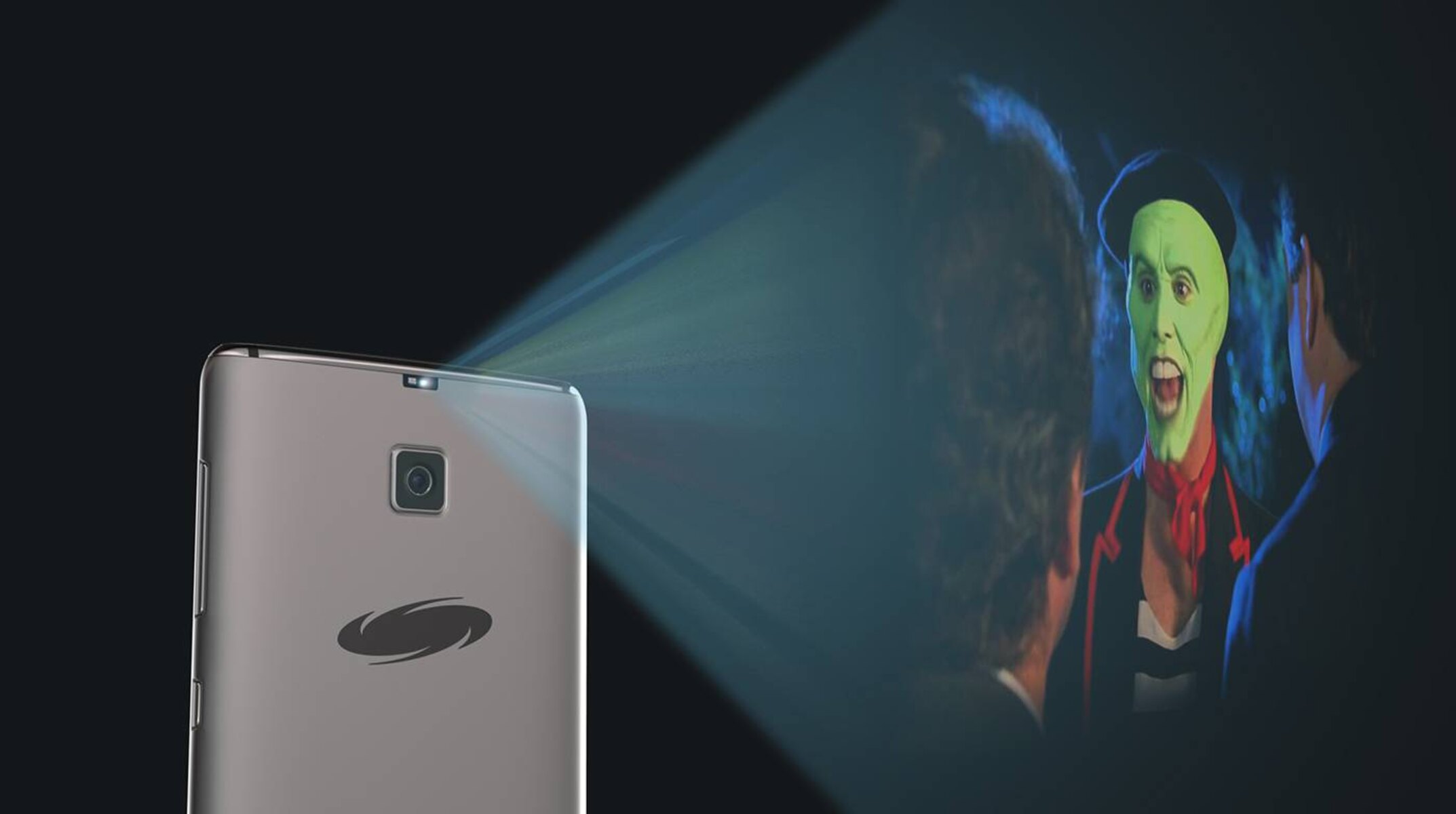Introduction
When it comes to presenting slides, a projector is often the go-to solution for many. However, there may be situations where a projector is not available or feasible. Whether you’re in a small meeting room, on the go, or just don’t have access to a projector, there are alternative methods that allow you to view slides without the need for one.
In this article, we will explore various ways to view slides without a projector. From utilizing a TV or monitor to converting slides into images, we’ll provide you with practical options to ensure that your presentations can still be delivered effectively. Whether you’re a student, professional, or simply someone looking for a way to view slides without a projector, we’ve got you covered.
Each method we discuss has its own advantages and considerations. Some methods may require additional hardware or software, while others may rely on readily available devices. By understanding and exploring these alternatives, you can choose the solution that best suits your needs and circumstances.
So, if you’re ready to learn how to view slides without a projector, let’s dive right in and explore the various options available to you. From utilizing the technology you have at your disposal to exploring portable alternatives, you’ll soon discover that there are practical solutions that can enable you to view and present your slides effectively, even without a projector.
Use a TV or Monitor
One of the simplest and most accessible ways to view slides without a projector is to connect your computer or mobile device to a TV or monitor. This method is particularly useful when you are in a small meeting room or have access to a larger display screen.
To use a TV or monitor to view slides, you will need to check if the display device supports the necessary ports and cables for your computer or device. Most modern TVs and monitors have HDMI ports, which are compatible with many devices. If your device doesn’t have an HDMI output, you may need to use an adapter or find alternative video output options, such as VGA or DisplayPort.
Once you’ve connected your device to the TV or monitor, you can easily mirror or extend your screen to display the slides. Mirroring allows you to show exactly what’s on your device’s screen, while extending the display enables you to have separate content on your device and the TV or monitor.
Before using this method, make sure to adjust the screen resolution and aspect ratio to ensure that the slides are displayed correctly and in the best possible quality. You can do this through your computer or device’s display settings.
Using a TV or monitor to view slides eliminates the need for a projector, and it allows you to take advantage of larger and more vibrant screens. Additionally, this method ensures that your audience can have a clear and unobstructed view of your slides, enhancing the overall presentation experience.
In situations where you’re presenting to a smaller audience or need a temporary setup, using a TV or monitor can be a practical and efficient solution. Whether it’s a business meeting, a classroom presentation, or an informal gathering, this method allows you to make the most of the available resources and deliver your presentation effectively.
Convert the Slides into Images
Another method to view slides without a projector is to convert the slides into images. This option is particularly useful when you have access to a device with a screen, such as a computer, tablet, or smartphone.
To convert the slides into images, you can use presentation software or online tools that allow you to save each slide as an individual image file. Programs like Microsoft PowerPoint, Google Slides, and Apple Keynote offer options to export slides as images. Simply open your presentation, navigate to the export or save as menu, and choose the image format you prefer, such as JPEG or PNG.
Once you have converted the slides into images, you can easily view them on your device. Open the image files using an image viewer or your preferred image viewing application. You can navigate through the slides manually or set up a slideshow mode to automatically display the images one after another.
Converting slides into images provides flexibility and convenience when it comes to viewing and sharing your presentation. You can easily access and view the slides on any device with image viewing capabilities, making it ideal for situations where a projector is not available or necessary.
Furthermore, converting slides into images also ensures compatibility across different platforms and devices. Whether you’re using a Windows PC, Mac, Android device, or iOS device, images can be easily viewed and shared without the need for specific software or hardware requirements.
This method also allows you to easily share the slides with others digitally via email, messaging apps, or file-sharing platforms. By sending the slide images, you can ensure that your audience or colleagues can still review and engage with the content of your presentation, even without a projector.
Converting slides into images is a versatile and accessible method that can be used in various scenarios. Whether you’re presenting in a small group setting, need to view slides on the go, or want to share your presentation digitally, this approach provides a reliable alternative to traditional projection methods.
Use a Mobile Device or Tablet
If you don’t have access to a projector, using a mobile device or tablet can be a convenient way to view slides. With the advancement of technology, these devices offer high-quality screens and portability, making them suitable for presentations on the go or in small group settings.
To use a mobile device or tablet to view slides, you can either transfer the presentation file to the device or access it through cloud storage or online presentation platforms. Many mobile devices and tablets support popular presentation file formats, such as PowerPoint or PDF, allowing you to open and view the slides directly.
To ensure optimal viewing, it’s important to adjust the screen brightness and orientation according to the lighting conditions and personal preference. You can also consider using a stylus or touch-enabled pen to annotate or highlight specific parts of the slides during the presentation.
In addition to built-in presentation software, there are various third-party apps available for mobile devices and tablets that offer advanced features for presenting and viewing slides. These apps often provide additional functionality such as laser pointer simulation, slide navigation, and annotation tools.
Using a mobile device or tablet not only enables you to view slides without a projector but also allows for interactive and dynamic presentations. You can take advantage of touch gestures, pinch-to-zoom, and other features to engage your audience and enhance the overall presentation experience.
Furthermore, with the ability to connect your mobile device or tablet to a larger external display via HDMI or wireless streaming, you can easily scale up your presentation if needed. This feature is especially useful when presenting to a larger audience or in a setting where a projector is available but not functioning properly.
Whether you’re a student, professional, or presenter on the go, utilizing a mobile device or tablet offers flexibility, portability, and accessibility when it comes to viewing and delivering slides. The convenience of having your slides readily available in the palm of your hand makes this method a popular choice for many.
So, if you find yourself without a projector, don’t worry! Grab your mobile device or tablet, load up your presentation, and confidently deliver your slides for a memorable and impactful presentation experience.
Print the Slides
Sometimes, the easiest way to view slides without a projector is to go old school and print them out. Printing the slides provides a tangible and portable format that allows you to easily navigate through the content, even without the need for technology.
To print the slides, you can save the presentation file as a PDF or image format and then use a printer to generate physical copies. Most presentation software provides options to save or export slides in these formats, ensuring compatibility across different devices and printers.
When printing slides, it’s essential to consider the paper size, orientation, and print quality. You can adjust these settings in your printer preferences to match your desired output. If your slides contain intricate visuals or small text, you may want to choose a larger paper size to ensure clarity and legibility.
Printing the slides provides several benefits. Firstly, it eliminates the need for a projector or any digital display devices. You can simply carry your printed slides in a folder or binder and refer to them as needed during your presentation.
Secondly, printing the slides allows for easy annotation and highlighting. You can use a pen, pencil, or highlighter to mark important points or write additional notes directly on the printed copy. This tangible interaction can enhance your presentation delivery and engage your audience at a more personal level.
Furthermore, by distributing printed copies of your slides to your audience, you can ensure that everyone can follow along and refer to the content during and after the presentation. Printed slides provide a physical reference that allows individuals to review and retain information at their convenience.
Printing the slides is a versatile option that works well in various scenarios. Whether you’re presenting in a small meeting, conducting a training session, or need to provide visual aids during a discussion, printed slides offer a reliable and accessible solution.
Although printing slides may not provide the same level of interactivity or visual impact as a projected display, it remains a practical and effective method for viewing and sharing content. So, don’t underestimate the power of a printed slide deck when it comes to making a memorable impression with your audience.
Use a Document Camera
When a projector is not available, another alternative for viewing slides is to use a document camera. A document camera, also known as a visualizer, is a device that captures live images or videos of documents, objects, or slides and displays them on a connected screen or monitor.
Using a document camera is a straightforward process. Simply place the slides on the document camera’s viewing surface and adjust the camera’s position and focus settings to ensure a clear image. The camera will capture the slides in real-time and display them on a connected screen or monitor.
Document cameras come in various sizes and types, ranging from portable handheld devices to larger desktop or ceiling-mounted units. They are commonly used in classrooms, offices, and conference rooms for various purposes, including presentations and demonstrations.
When using a document camera to view slides, it is important to consider the lighting conditions and the size of the slides. Ensure that the lighting is adequate to avoid glare or reflections on the slides, and adjust the camera settings if necessary. It is also advisable to use large, clear slides to ensure readability and visibility.
One advantage of using a document camera is that it allows for real-time interaction and annotation. You can use a stylus or pointer to emphasize specific parts of the slides or write notes directly on the projected image. This interactive element can enhance audience engagement and create a dynamic presentation experience.
Furthermore, document cameras offer the option to record and save the live footage or images. This feature is particularly useful if you want to review or share the presentation later or if you are conducting a training session or demonstration that requires visual documentation.
Using a document camera provides a versatile and practical solution for viewing slides without a projector. Whether you’re in a classroom setting, office environment, or any other venue, a document camera can come to the rescue when projection technology is unavailable or impractical.
So, if you find yourself without a projector but have access to a document camera, you can confidently deliver your presentation by leveraging this device’s capabilities. Capture the attention of your audience with clear and real-time visuals while maintaining the flexibility to interact and annotate as needed.
Share the Slides Digitally
In today’s digital age, sharing slides electronically has become a common and convenient method to view presentations without the need for a projector. By leveraging various online platforms and communication tools, you can easily distribute your slides to others for viewing on their own devices.
There are several ways to share slides digitally. One option is to upload the presentation file to a cloud storage service, such as Google Drive, Dropbox, or OneDrive, and provide the link or access to the recipients. This method allows them to access and view the slides directly through a web browser or by downloading the file onto their devices.
Another popular method is to use online presentation platforms, such as SlideShare or Prezi, which provide a dedicated space for hosting and sharing presentations. These platforms often offer features that enhance the viewing experience, such as slide transitions, animations, and the ability to embed the slides on websites or social media.
If you’re working in a collaborative setting, you can also share the slides through online collaboration tools like Google Slides or Microsoft Office 365. These platforms allow multiple users to edit, comment, and view the slides simultaneously, providing real-time collaboration and feedback.
Additionally, you can send the slides as attachments via email or messaging apps. This method is particularly useful for one-on-one communication or small group settings where direct sharing is sufficient.
Sharing slides digitally offers several advantages. First and foremost, it eliminates the need for physical distribution or the use of additional hardware like projectors or document cameras. Recipients can view the slides at their convenience, on the devices of their choice, and even offline if they have downloaded the file.
Digital sharing also provides flexibility in terms of accessibility and compatibility. Whether your audience is using a computer, tablet, or smartphone, they can easily access and view the slides without compatibility issues or specific software requirements. This convenience ensures that your presentation can reach a wider audience.
Furthermore, sharing slides electronically enables seamless collaboration and feedback. Recipients can easily provide comments or suggestions directly on the slides, fostering an interactive and collaborative presentation environment.
So, if you find yourself without a projector, consider embracing the power of digital sharing. Explore the various online platforms and tools available, and leverage their features to effectively distribute and showcase your slides to a broader audience, all while eliminating the need for physical projection equipment.
Use a Portable Projector
When you need to view slides without a traditional projector setup, a portable projector can come to the rescue. Portable projectors are compact, lightweight devices that allow you to project your slides onto any suitable surface, making them ideal for on-the-go presentations or scenarios where a fixed projector is unavailable.
To use a portable projector, simply connect your device, such as a laptop, tablet, or smartphone, to the projector using the appropriate cables or wireless connectivity options. Many portable projectors support HDMI or wireless screen mirroring, ensuring compatibility with a wide range of devices.
Portable projectors typically have built-in speakers, but for a better audio experience, you can also connect external speakers or use headphones. Adjusting the projection size and focus is essential to ensure the slides are displayed clearly and in the desired size, depending on the available space and viewing distance.
The advantage of a portable projector is its flexibility and versatility. You can easily set it up in different locations, whether it’s a small meeting room, outdoor gathering, or even in your own living room. These projectors often have adjustable brightness and image settings, allowing you to optimize the display based on the ambient lighting conditions.
Another benefit of portable projectors is that they can project onto various surfaces, including walls, screens, and even makeshift surfaces like whiteboards or cloth. This adaptability eliminates the need for a specific projection screen and offers more flexibility in terms of positioning and setup options.
Portable projectors also come in handy when you’re traveling or presenting in unfamiliar locations. Instead of relying on the availability and quality of projectors in different venues, you can bring your own portable projector and ensure consistent performance and reliability.
While portable projectors provide a convenient solution for viewing slides without a traditional projector, it’s important to consider their limitations. These projectors may not offer the same level of brightness or resolution as larger, fixed projectors. Additionally, the image quality may vary depending on the ambient lighting conditions and the size of the projected image.
However, despite these limitations, portable projectors offer a practical and efficient way to view slides in various situations. Whether you’re presenting at a client’s office, hosting an outdoor event, or simply want to have a portable setup for impromptu presentations, a portable projector can be a reliable tool that ensures your slides are projected in a clear and visible manner.
So, if you’re looking for a flexible and portable solution for viewing slides without a traditional projector setup, consider investing in a portable projector. With its compact design and versatile functionality, you can project your slides onto any surface, anywhere, and engage your audience with impactful visual content.
Conclusion
When it comes to viewing slides without a projector, there are several practical alternatives that can ensure your presentations are delivered effectively. From utilizing a TV or monitor to converting slides into images, using a mobile device or tablet, printing the slides, using a document camera, sharing the slides digitally, or using a portable projector, each method offers its own advantages and considerations.
Using a TV or monitor provides a simple and accessible option, especially in smaller settings or when a larger display screen is available. Converting slides into images allows for flexibility and compatibility across different platforms and devices, making it easy to view and share the slides electronically. Using a mobile device or tablet offers portability, convenience, and interactive features for engaging presentations on the go.
Printing the slides provides a tangible and portable format that can easily be distributed and annotated, perfect for situations where technology is not readily accessible. Utilizing a document camera allows for real-time capturing and projecting of slides, creating an interactive visual experience. Sharing the slides digitally through various online platforms and tools ensures accessibility, collaboration, and wider audience reach.
Lastly, using a portable projector offers flexibility and versatility, allowing you to project slides onto any suitable surface, making it suitable for on-the-go presentations and situations where fixed projectors are unavailable.
In conclusion, when you find yourself without a projector, don’t let it limit your ability to view and deliver your slides effectively. Explore the alternative methods discussed in this article and choose the one that best fits your needs and circumstances. Whether it’s leveraging the technology available to you or opting for more traditional approaches, there are practical solutions that can ensure your presentations are impactful and engaging, regardless of the absence of a projector.







